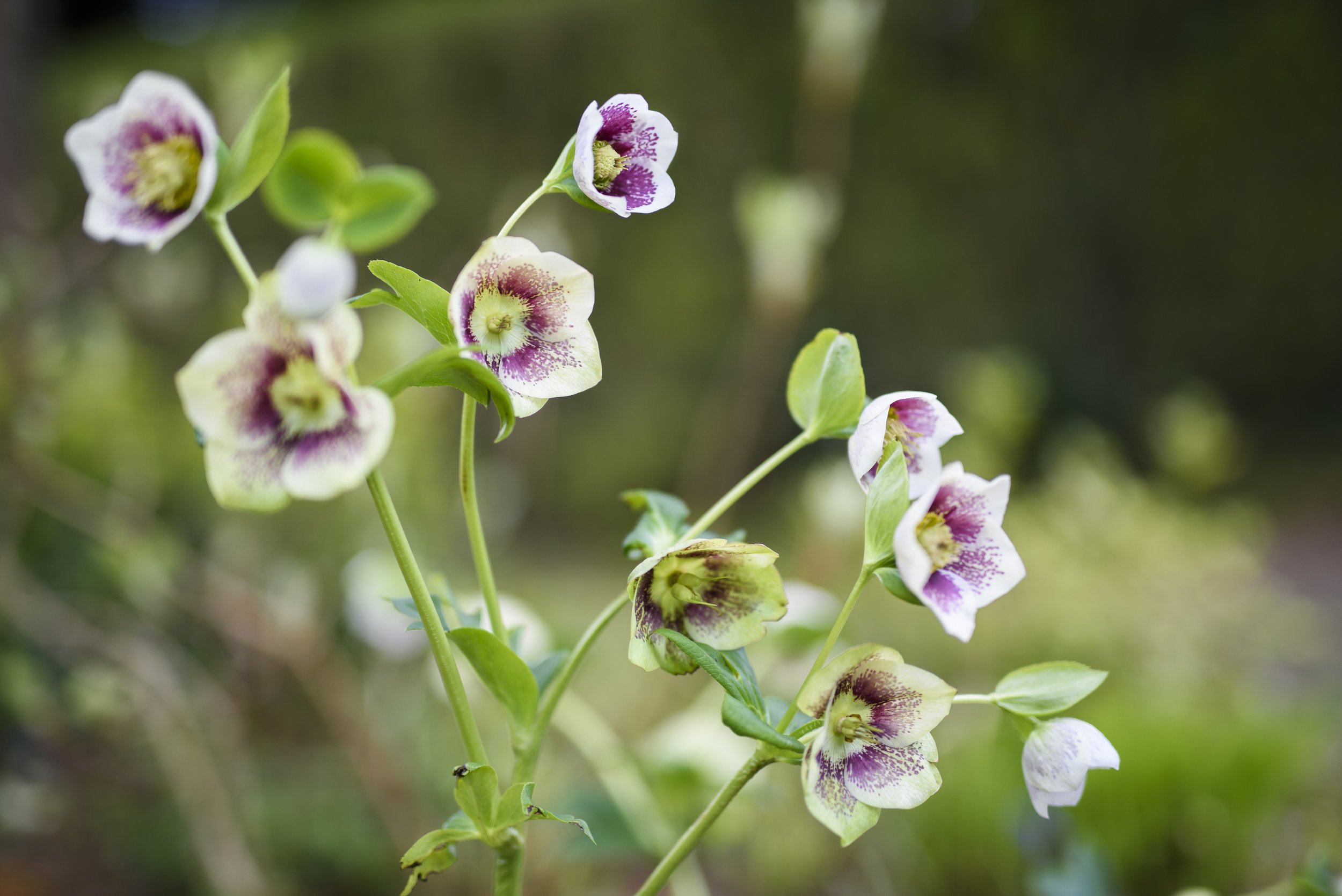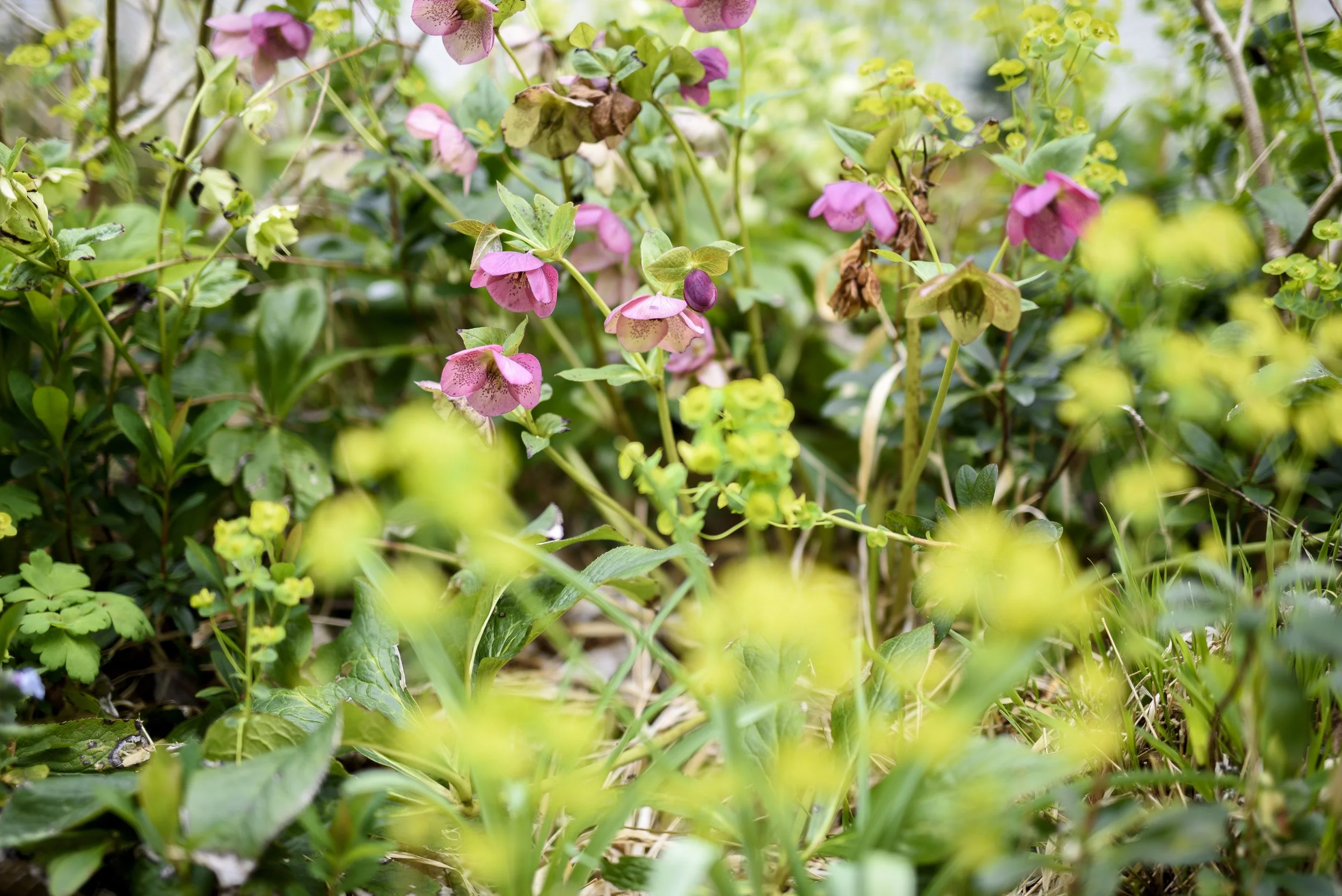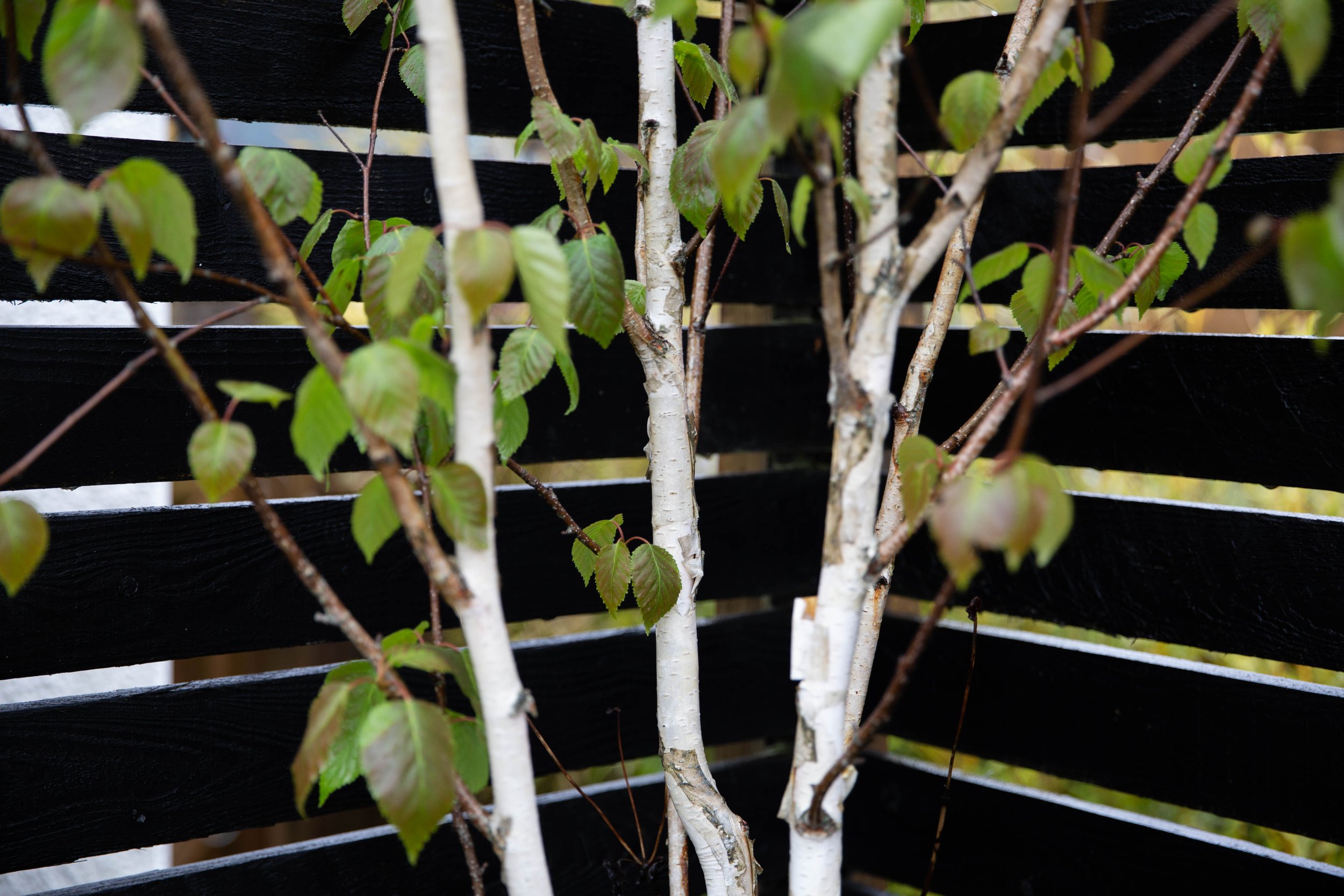Plant guide: Hellebores
Hellebores are an invaluable winter flowering plant.
Right in the darkest months of the year, when the skies are almost always grey, the daylight hours short, the branches bare of leaves, and our gardens are stripped right back their bones, the cheerful hellebore pops up and performs something that seems almost like a miracle: producing beautiful elegant flowers in the middle of the winter gloom.
Botanical name: Helleborus
A range of different species are popular garden plants, including Helleborus x hybridus, Helleborus niger (often called the Christmas rose), Helleborus argutifolius and Helleborus x sternii.
Plant type:
Herbaceous perennial
Hellebores don’t have woody stems, but many are evergreen, which is fairly unusual for herbaceous plants. Their leaves remain above ground throughout the year.
Growing conditions:
Hellebores are happiest in partial shade, though they can tolerate greater extremes of sun or shade. They need a sheltered spot with some protection from wind. They are quite tolerant of most soil conditions, but are happiest in fertile, moist but well drained soil. In drier soils, mulching in the Autumn can help to increase soil moisture and fertility.
Hellebores typically grow to around 30cm to 80cm tall, depending on the variety, so tend to look good at the front of a border, where their nodding flowers can be seen. As they flower in the winter months (January to March), when we’re often spending less time outside in the garden, it can also be a good idea to plant them in areas that can be seen from the windows, or close to the back door, to fully enjoy their flowering period.
Hellebores look especially good growing in containers, bringing the brightness of flowers at a time when little else is in bloom. This also gives the option of raising the plant up higher, so their downwards nodding flowers can be more easily admired.
How to plant:
Hellebores can be planted at any time of the year, as long as the soil is not waterlogged or frozen. They’re usually most readily available to buy in the Autumn and Winter, so tend to be planted then, though it’s actually preferable to plant them before they come into flower, so they can use their energy to establish their roots and bed in, before flowering takes up resources.
Dig a hole roughly twice as wide as the pot, and the same depth. Place the plant in the hole, and back fill with soil. Pat in. Ensure that the height of the top of the compost of the pot is level with the soil surface. Water and continue to water frequently for the first six months – one year if planting at a time when there isn’t much rain.
Care:
A fairly trouble free plant, hellebores don’t need a huge amount of ongoing care once they’re established. They appreciate a mulch in Autumn, with woodchip mulch or leaf mould, to help retain levels of moisture and food in the soil. Take care not to touch the plant’s leaves or crown with the mulch.
Old flower stems can be cut before they have a chance to set seed, as hellebores are prolific seed setters, and usually hybridise with surrounding plants, leading to murkier flower colours.
Old tatty leaves can be cut back in late Winter, just before the new flowers appear.
Uses:
Not typically grown as a cut flower in the traditional sense (on stems in a vase), hellebore flowers are often cut and floated in a bowl of water – another way to enjoy the delicate flowers up close.
Grow with:
As they flower so early in the year, hellebores can be grown alongside almost anything else, their flowers spent before most other plants are even thinking about producing buds, leaving just a mass of glossy green foliage above ground. They look spectacular planted in drifts with other early flowering bulbs, such as snowdrops, cyclamen or crocus.
Our favourite varieties:
Two really striking varieties are ‘Pink Spotted Lady’ and ‘White Lady Spotted’ – both have distinctive speckled colouring inside the flower heads. White Lady Spotted has completely white flower edges and a dark pink speckling at the centre of the flower. ‘Pink Spotted Lady’ – as the name suggests – is similar but with a pink flower. (And why that word “spotted” is in different places in the different names, we just don’t know!)
One of many hellebore cultivars with gorgeous pink speckles in the centre of the flower
Bright pink hellebore flowers offset with lime green euphorbia
Related articles
Check out the plant guides for some of our other favourite plants for Winter interest:









